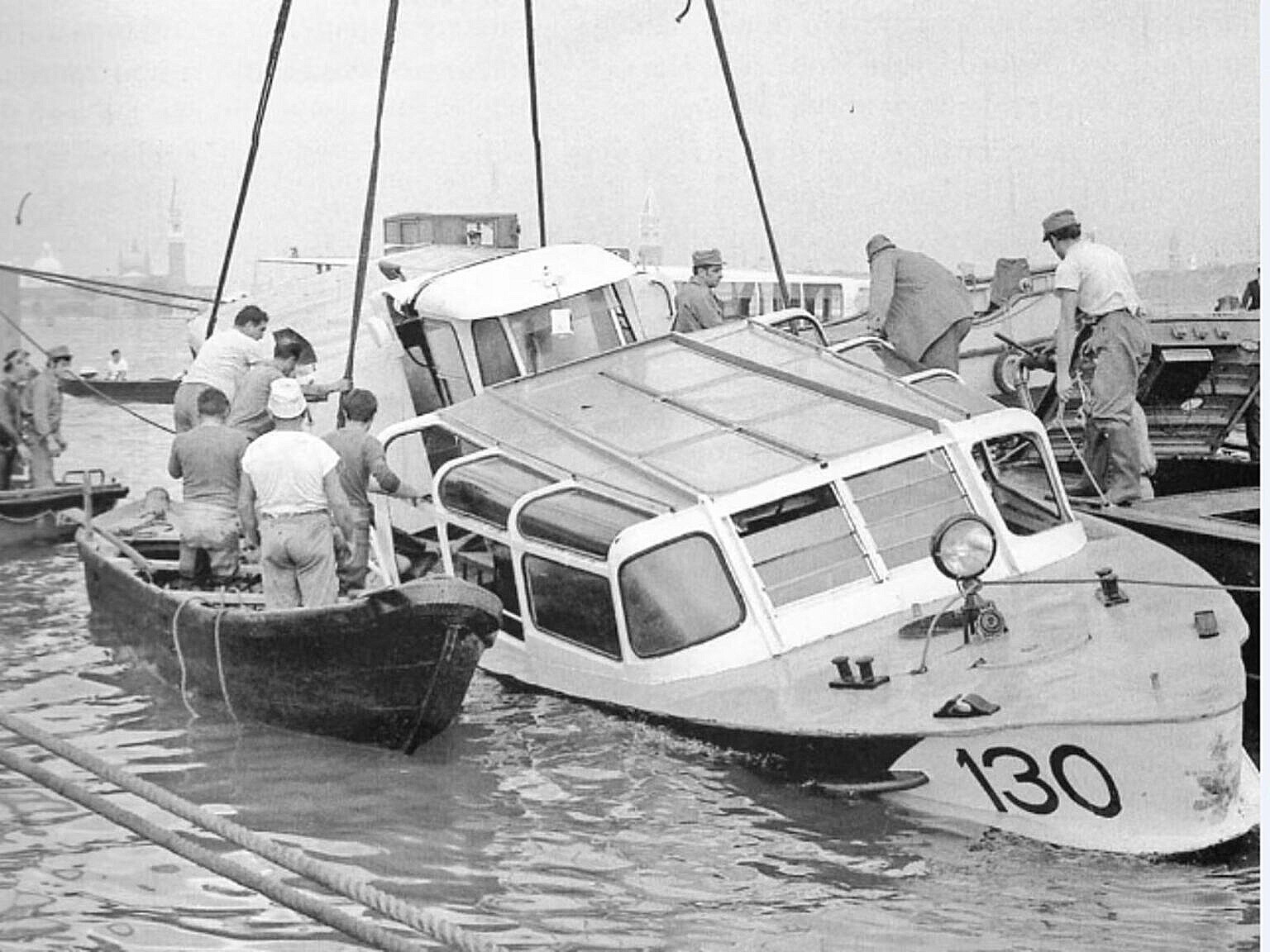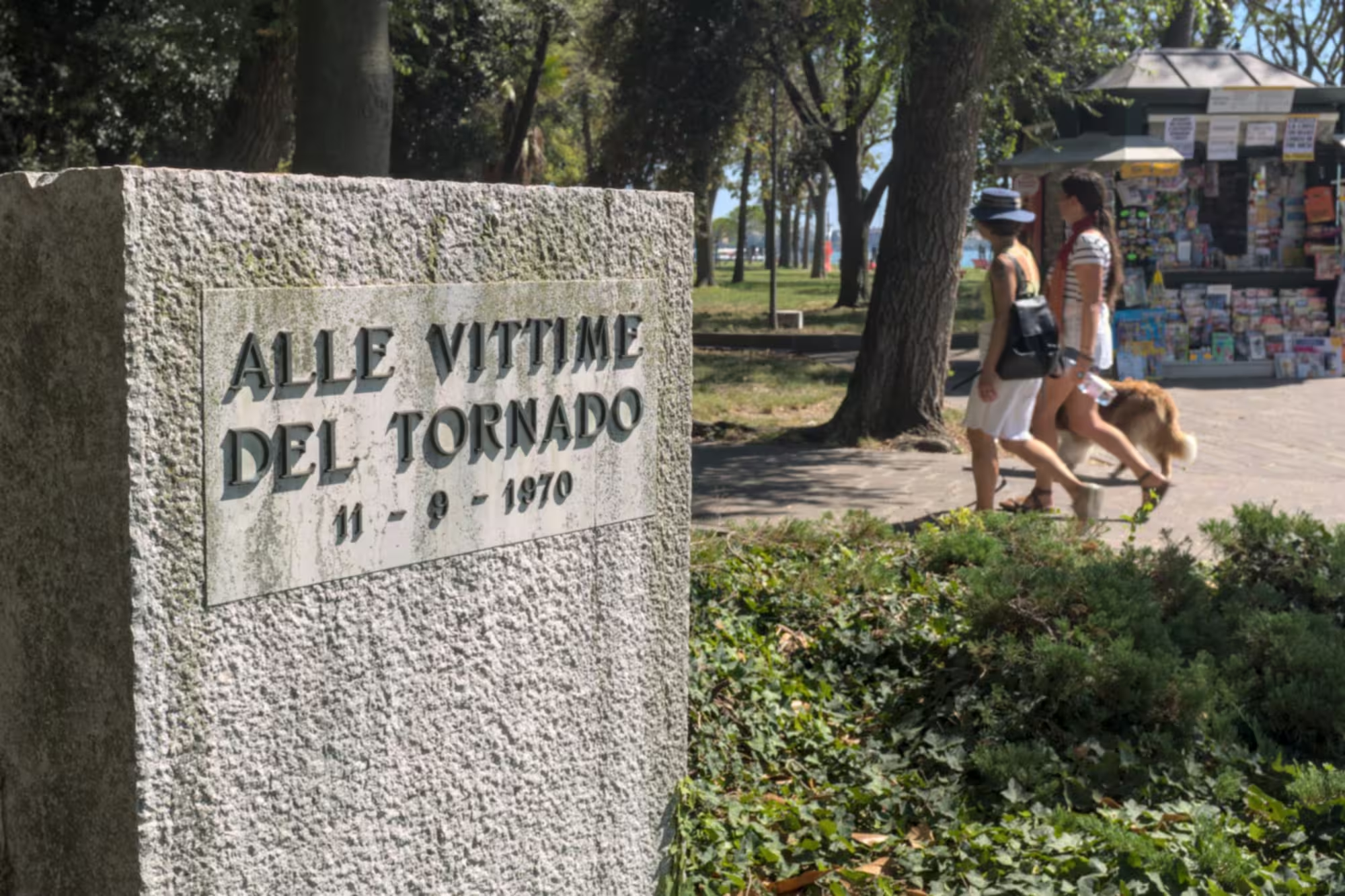Nine-eleven means different things in different places.
Venetian Stories
This post is an issue of our newsletter — Venetian Stories — which goes out every few weeks, to keep in touch and share stories and titbits from and about Venice and its history.
In Chile it is the anniversary of the fascist coup against Allende in 1973, which led to decades of dictatorship. The terrorist attack of the World Trade Center in 2001 is naturally what is remembered in the USA for nine-eleven.
In Venice nine-eleven is the anniversary of a tornado which killed 36 persons and wounded hundreds on September 11, 1970.
The tornado of 11-9-1970
Particular weather conditions over Northern Italy caused a tornado to form near Padova in the early evening. Within the next hour it moved towards the Venetian lagoon. Here it first hit the hospital on the island of Santa Maria della Grazia.
The tornado made landfall at Sant’Elena in Venice at 21.35, after dark.
The sudden gusts of wind, arriving at 220 km/h, flipped over a vaporetto (water bus) with fifty passengers. Many remained trapped inside in the dark and twenty-one drowned. The darkness and general mayhem hampered the rescue effort.
The tornado continued across Sant’Elena, the Lido and onwards to Punta Sabbioni and Ca’ Savio. Here it razed to the ground a camp site with three hundred guests, causing twelve deaths and hundreds wounded.
The force of the wind moved cars by hundreds of metres, and some even ended on the sea.
While tornadoes do happen in the Venetian lagoon, they’re usually not that powerful.
The last time a powerful tornado hit was in 2012, when it caused millions of damages, but luckily no deaths.
The tornado in 2012 was an F3 tornado, while the one in 1970 was an F4.

The sunken water-bus being raised the next morning (press photo)
Witnesses
Everybody in Venice moves around in the water-buses, so the strongest impression on the general public was the sunken boat and the many drowned. It could have been anybody.
Below is the testimony of some of the survivors.
The captain of the water-bus
“It was about 9.30 pm and, at a certain point, I felt a furious gust of wind, I tried to approach the landing dock at S. Elena, the closest point. It was a matter of a few seconds, I saw the motorboat lifted up, and then capsize: an incredible thing. When I found myself in the water, I tried to help those close to me, the area was dark and unfortunately I saw very few.”
A female passenger
“A very strong gust of wind, the rain started to beat like hail, the motorboat rolled two or three times then the lights went out and I were tossed from side to side; I heard the sound of breaking glass and water poured into the motorboat. The waterbus capsized and I was pushed up against the floor of the boat where there was a pocket of air that allowed me to breathe. I no longer felt anything, there was absolute darkness, then I was dragged by a current, I felt an open window to the touch and slipped out. On the surface there were people screaming and inanimate bodies, I got close to the pier and someone pulled me up.”
A man in the aft cabin
“When it started to rain, everyone rushed to close the windows, unknowingly closing possible escape routes. When the motorboat suffered the first blow, everyone were thrown to the opposite side, in my opinion helping to make the boat even more unstable. After two or three sharp blows, the waterbus capsized: I tried to get out but everyone was close to the door that leads to the cabin, so I headed towards the stern exit, I was in difficulty, I was out of air and my vision blurred. As the boat sank by the bow, an air bubble was created thanks to which I managed to reach the surface, where there was a strong wind and high waves”.


Leave a Reply